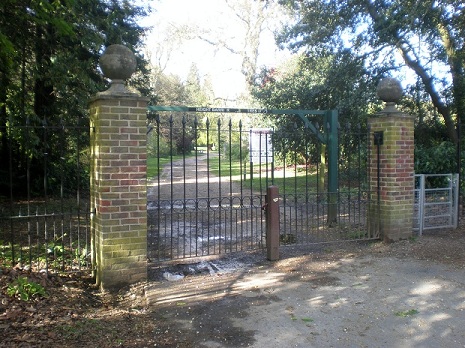By Tim Lambert
The Beginning of Leigh Park
In 1944 Portsmouth City Council bought the Leigh Park Estate near Havant. They planned to build a new overspill community there. Altogether the council bought 1,670 acres and work on building Leigh Park began in 1947 when the mayor of Portsmouth operated a digger and dug the first sod.
In 1949 the first residents moved into houses in and around Bramdean Drive and by 1951 about 3,500 people were living in Leigh Park in about 1,000 houses. Most of the streets in Leigh Park were named after Hampshire villages.
However, the new estate at Leigh Park lacked amenities. In 1951 there was no doctor, no post office, and no shop. Furthermore, fares to go shopping in nearby Havant were expensive. The first permanent shops in Leigh Park, in Stone Square, did not open till 1952. The first shops in Park Parade opened in the autumn of 1955. More shops opened in Park Parade in 1956 and Greywell Precinct opened in 1966.
Nevertheless, in the 1950s many people were glad to get away from the crowded city of Portsmouth and to live near fields.
The new housing estate at Leigh Park continued to grow and in 1951 a plan for 1,500 more houses was approved. New streets were named after Hampshire villages or after local farms.
By 1956 Middle Park Way had been built and by 1961 the population of Leigh Park was almost 30,000.
Meanwhile, Churches were built in Leigh Park. From 1951 Roman Catholic mass was celebrated in a Nissan hut at Leigh Park. A Catholic chapel was built in Dunsbury Way in 1955. In 1970 it was replaced by St Michael and All Angels Church. A Methodist Church was built in Botley Drive in 1956 and the first Baptist Church in Leigh Park opened in 1957. St Francis Church was built in 1963 and St Albans in West Leigh was built in 1966. However, St Michael and All Angels Catholic Church burned down in 2001.
Schools in Leigh Park
Meanwhile, schools were built in Leigh Park. Barncroft Junior School was built in 1955. It was followed by Front Lawn Infants School in 1957 and Front Lawn Junior School in 1958. In 1957 Oak Park Secondary School was opened. Broomfield School followed in 1958.
In 1957 the first library in Leigh Park was opened by Trosnant School. It later moved to Greywell Precinct. Leigh Park Library moved to a new building in 1997.
Furthermore, in the mid-1950s an industrial estate was built in Southeast Leigh Park. The first factory to open there was Minimodels Ltd in 1954.
In the 1960s Leigh Park was extended further when a housing estate was built at West Leigh. Warren Park was built in 1966-1970. By then Leigh Park had a population of about 40,000. A new Community Centre opened in Leigh Park in 1963. It replaced one held in ex-naval buildings in Riders Lane. At the same time, an ambulance station was opened. So was a bowling alley.
After 1979 the government made it easier for council house tenants to buy their own houses and today many of the houses in Leigh Park are privately owned.
Leigh Park estate was once owned by Sir George Staunton (1781-1859). He purchased it in 1820. Leigh Park House was demolished in 1959. However, in 1987 it was decided to restore the remaining parts of Sir George Staunton’s estate and Sir George Staunton Country Park was created.

Today the population of Leigh Park is about 28,000.